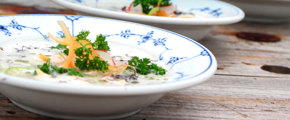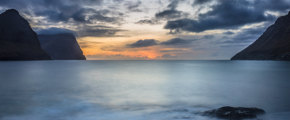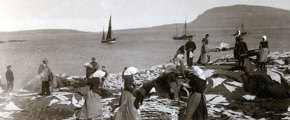Atlantic salmon - Farmed
In the Faroe Islands, salmon is farmed in its natural environment and without the use of antibiotics. It is renowned for its very high quality and its pure taste, full of flavour.
The Atlantic salmon requires a highly specific environment to thrive and the fjords and sounds of the Faroe Islands are the perfect location for farming Atlantic salmon.
Biology
The Atlantic salmon (Salmo Salar) can be found in rivers, lakes and waters all over the North Atlantic, and the waters around the Faroe Islands are among their natural feeding grounds.
The Atlantic salmon has a blueish black colour on its back, shiny silver sides and a white stomach. It has uneven black spots on the sides, gills and cheeks. The Atlantic salmon can grow up to 150 cm in length. It has 2 dorsal fins, 1 pelvic fin and a posterior fin.
The Atlantic salmon is anadromous, which means it migrates from salty waters to fresh water to spawn. Wild salmon from all over the North Atlantic travel to feeding grounds just north of the Faroe Islands. Once they have fattened, they seek out rivers and streams in northern Europe to spawn.
In Faroese Salmon is called Laksur.
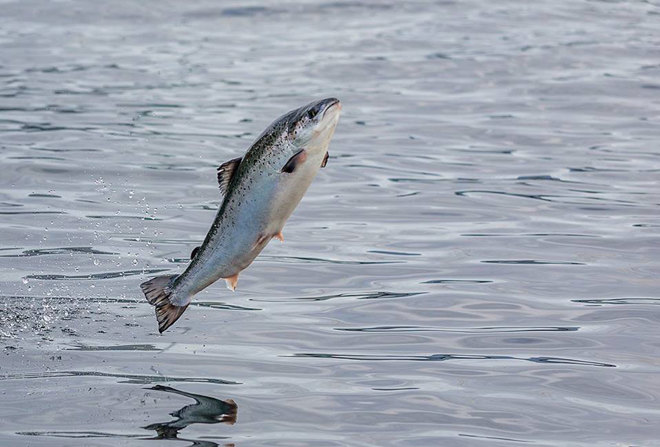
Aquaculture
Farmed salmon starts life on land. The roe is fertilised in fresh water and kept at a constant temperature in an incubator tray. Once hatched, the fry will have a yolk sac attached to their stomachs. The fry will sustain themselves on this sac until it is depleted of nourishment. When the yolk sac has been consumed, they change to being fed and are moved to larger freshwater tanks.
After approximately 12 months in freshwater, they are ready for saltwater. Before they are let into the sea, they have to be acclimatised to saltwater. This is done through a smoltification process, and then they are called smolt. After this, the salmon is transferred to pens in fjords and sounds across the Faroe Islands.
The Faroe Islands are located in the heart of the North Atlantic, where the warm currents of the Gulf stream meet cold currents from the Arctic. The waters surrounding the Faroe Islands are dynamic and represent one of the cleanest marine environments on the planet.
The constant stream of strong currents running over the mid-ocean ridge on which the islands are located on, and the cold tides filtering through the fjords, create a pure and pristine environment where the Atlantic salmon can thrive. There is a continuous renewal of water and nutrients that flow through the aquaculture pens, ensuring an optimal environment for the farmed Atlantic salmon.
The ocean temperature around the Faroe Islands is relatively constant at about 8 degrees Celsius throughout the year. This means that the Atlantic salmon is never exposed to extreme fluctuations in temperature and will naturally grow slowly and steadily. The result is a superior taste and texture.

Superior taste
The meat of the Atlantic salmon has an attractive pink colour, and is flaky and moist. The Faroese salmon has a pure, rich and intense flavour and a supple, creamy texture. All the elements that make salmon so popular - the colour, flavour and texture – have been perfected in Faroese farmed Atlantic salmon.
Faroese Atlantic salmon can be used to create a wide range of delicious dishes, from a quick 15-minute after-work meal to a sumptuous gourmet banquet. The Atlantic salmon is a versatile fish that lends itself to a variety of preparation techniques – fried, poached, grilled, marinated, smoked or sushi – and fulfils the requirements for a healthy diet.
Faroese Atlantic salmon is especially popular with sushi chefs and is served in some of the best sushi restaurants around the world. Faroese Salmon is sushi graded. It is safely consumed raw, without prior freezing.
Atlantic salmon is also dense in nutrients and an excellent source of high quality protein, vitamins, and minerals. Particularly interesting is the high content of Omega-3 fatty acids. These have significant health benefits and contribute to healthy brain function, limber joints, and a reduced risk of heart disease.
The healthier and fresher the fish, the better the quality of the product. This means that short transport time is imperative.
The Faroe Islands are quite small, so it is easy to limit transport time and guarantee superior quality and freshness. Despite their location in the middle of the North Atlantic, the Faroe Islands have a highly develop infrastructure in place.
With effective logistic management and regular cargo links and flights to all neighbouring countries, fresh Faroese Atlantic salmon can reach American and Asian markets within 24 hours after being harvested.
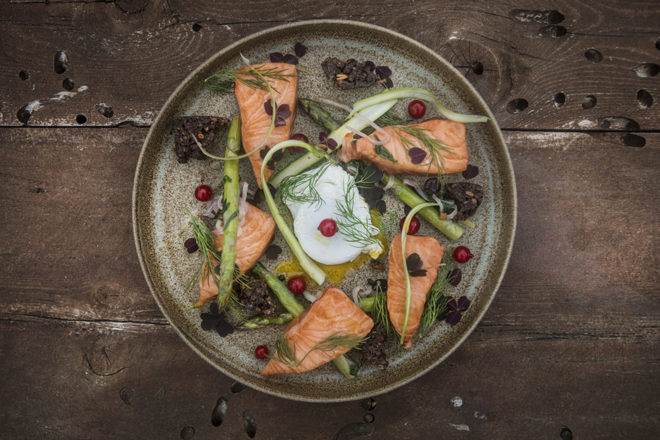
Sustainability and fish welfare
The people of the Faroe Islands have lived off the sea for a millennia - developing a deep and enduring respect for the ocean and the environment.
The Faroese aquaculture industry strongly believes in quality through welfare. The industry is commitment to sustainability, a sound stewardship of the environment and has adapted some of the most advanced technology solutions for ensuring good fish welfare and high food quality.
The Faroe Islands have implemented one of the most comprehensive and stringent regimes in the world for aquaculture veterinary regulation. This was done to ensure a consistent management of fish welfare and responsible care of the environment.
The legislation has been highly successful, which is evident in the fact that no antibiotics are used in Faroese salmon farming. Compared to all other major salmon producing countries, the industry in the Faroe Islands has the best biological results. This includes the lowest morality rate, the highest smolt yield and the lowest biological feed conversion ratio (BFCR). The BFCR is a measurement of how many kilos of feed it takes to produce one kilo of salmon.
Atlantic salmon need ample room to swim in order to sustain their health and welfare, therefore the density of salmon in aquaculture pens in limited by law. However, Faroese producers maintain a density that is even below the official limit. This ensures maximum welfare, and therefore also the highest quality.
There is a growing concern about the cost and environmental effects of the production of protein products. Traditionally produced meat or other products high in protein are often costly and detrimental to the environment. Farmed salmon from the Faroe Islands offers a healthy and tasty alternative. Farmed salmon has a protein to weight ratio that is far superior to other products.
The growing global population will require more protein. Farmed salmon can help boost the production of protein for generations to come.

